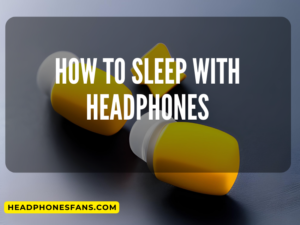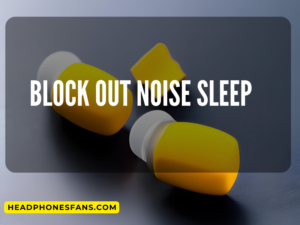Are you bothered by the irritating process of inserting earplugs and the difficulty of creating a snug fit? Fear not, for we have uncovered an ingenious method to revolutionize this essential yet vexing task. This approach involves the application of a lubricant during the insertion of earplugs, which surprisingly enhances the sealing process. Intriguing, isn't it? A preliminary exploration of this technique resulted in promising outcomes, paving the way for more extensive research.
Initiating the Transformation: A Comprehensive Study by NIOSH
- Dry vs. Lubricated Insertion: An In-Depth Comparison
- Lubricated Earplugs' Unprecedented Noise Attenuation Potential
- Skyrocketing Success Rates in Achieving the Perfect Seal
The National Institute for Occupational Safety and Health (NIOSH) led the charge in investigating the potential benefits of lubricated earplug insertion. They conducted a comparative study analyzing dry and lubricated insertion methods, delving into the nitty-gritty of both techniques. The findings were impressive – earplugs lubricated before insertion outperformed their dry counterparts in noise reduction, a key parameter in earplug effectiveness.
Furthermore, users reported a significant increase in the success rate of achieving an ideal seal with lubricated earplugs. This essentially implies an enhanced overall experience, providing superior comfort without compromising on noise attenuation. A revelation indeed!
Taking a leap from the findings of the NIOSH study, let's delve into the world of Oto Ease. This lubricant is specially designed to smoothen your earplug insertion process. My firsthand experience with it has been nothing short of spectacular, making it a must-include in my auditory care routine.
Oto Ease lubricant has a unique compatibility with different types of earplugs, making it a versatile asset for earplug users. Furthermore, the application of this lubricant can be customized according to the user's comfort, enhancing the adaptability of this innovative method.
In terms of the effectiveness of earplugs applied with Oto Ease, the results are rather promising. The lubricated earplugs showcased similar noise-blocking prowess as their dry-inserted counterparts, a finding that solidifies their place in the world of auditory protection. In addition to this, users reported a substantial improvement in sealing and insertion ease, making the process more comfortable and user-friendly, especially for those who utilize triple-flange silicone earplugs.
At the close of this exploration, it's quite clear that the application of a lubricant like Oto Ease can significantly enhance the earplug insertion process. It provides an efficient, effective, and versatile solution to the common struggles encountered by earplug users.
Moving forward, it's essential to delve deeper into the practicality of this ingenious approach. If you're someone who has struggled with inserting earplugs or achieving a perfect seal, the idea of using a lubricant to aid this process may indeed seem enticing. However, one may wonder if all these promising claims hold up in a real-world scenario. Well, to answer that, we'll have to look into the comfort and ease of use factors that come with lubricant-assisted earplug insertion.
First and foremost, it's undeniable that the process of inserting an earplug into the ear canal can be quite uncomfortable for some, if not downright irritating. The consistent pushing and adjusting to fit the earplug can make one dread the process. However, with the introduction of a lubricant into the process, the insertion becomes smoother, and the overall experience improves significantly.
Apart from providing a smoother insertion process, a lubricant like Oto Ease also enhances the compatibility of earplugs with the user's ears. Every individual has uniquely shaped ear canals, making it quite challenging to find an earplug that fits perfectly. However, with a lubricant, the earplug can more easily adjust to the shape of the ear canal, making it an excellent solution for those who struggle with compatibility issues.
Now, one might wonder if the application of a lubricant would affect the noise-blocking capabilities of the earplugs. After all, the primary purpose of earplugs is to reduce noise, and any method that compromises this function would be a deal-breaker. However, the research by NIOSH and the user experiences reported make it clear that lubricant application does not compromise the noise attenuation capabilities of earplugs. In fact, in some cases, it even seems to enhance the noise-blocking performance.
The final point to note about the use of a lubricant for earplug insertion is the comfort it brings to the user. While we've already touched on this aspect a bit, it's worth emphasizing that comfort is a crucial factor when it comes to earplug usage. If an earplug is uncomfortable, it doesn't matter how effective it is at noise reduction – users will likely choose not to use it. However, lubricants can significantly improve comfort, making the process more bearable, even enjoyable.
In conclusion, the use of a lubricant for earplug insertion seems to be an efficient and effective solution to common struggles faced by earplug users. By enhancing compatibility, ease of use, and comfort, while also maintaining impressive noise-blocking performance, lubricants like Oto Ease have the potential to transform the earplug usage experience entirely. To those struggling with earplug insertion or those who are simply curious and open to trying new things, we highly recommend giving this method a shot. You might be surprised at the difference a little bit of lubrication can make!
For more information and similar blog posts, please refer to the following links:
When it comes to ear protection, many users tend to underestimate the importance of a perfect seal in their earplugs. But as studies like the NIOSH pilot study on lubricated earplug insertion have shown, achieving a good seal is crucial in optimizing the performance of earplugs. To this end, using a lubricant to insert earplugs can significantly improve not only the seal but also the comfort and ease of use.
Now, let's take this discussion to a personal level. Many earplug users, myself included, have found it challenging to achieve a perfect seal. Often, the earplug either doesn't fit well, or it takes a lot of time and effort to insert it properly. However, with the use of a lubricant, the insertion becomes significantly easier and less of a hassle.
But, are all lubricants created equal in this aspect? From my experience, Oto Ease has stood out as a particularly effective lubricant for earplug insertion. Its specific formulation is designed for use with earplugs, ensuring compatibility with a variety of earplug types. Furthermore, it allows for easy variations in the lubricant application, catering to different user preferences.
Now, you might be wondering, does using a lubricant compromise the noise-blocking capabilities of earplugs? This is a valid concern, and one that I had when I first heard about the idea. Fortunately, the answer is no. Lubricated earplugs offer similar noise-blocking performance as dry-inserted earplugs, ensuring that you don't sacrifice protection for comfort.
So, as a final word, if you've been struggling with earplug insertion, or simply want to improve your experience, I highly recommend trying a lubricant like Oto Ease. Its versatility and ease of use, coupled with the enhanced comfort it provides, make it a game-changer in ear protection. For more information and similar articles, check out these links:
- Samsung Q990B vs Sony HT-A9
- Sony HT-S350 vs HT-S400
- JBL Partybox 100 vs Encore
- Polk vs Samsung Soundbar
- Klipsch vs Bose Soundbar.

Hey there mobile audio lovers! My name is Darlene R, founder and chief editor at headphonesfans.com. Ask any mobile audio fanatic, installer, or company rep what makes a good car speaker, sub or amp, or, better yet, why he or she prefers a certain brand over another, and be prepared to endure a litany of opinions, viewpoints, and passion-fueled perspectives. To be honest, mobile audio shopping can be a daunting task without a guide, so I’ve assembled what I feel are the best products to consider to make things easier for you. Welcome headphonesfans.com!





